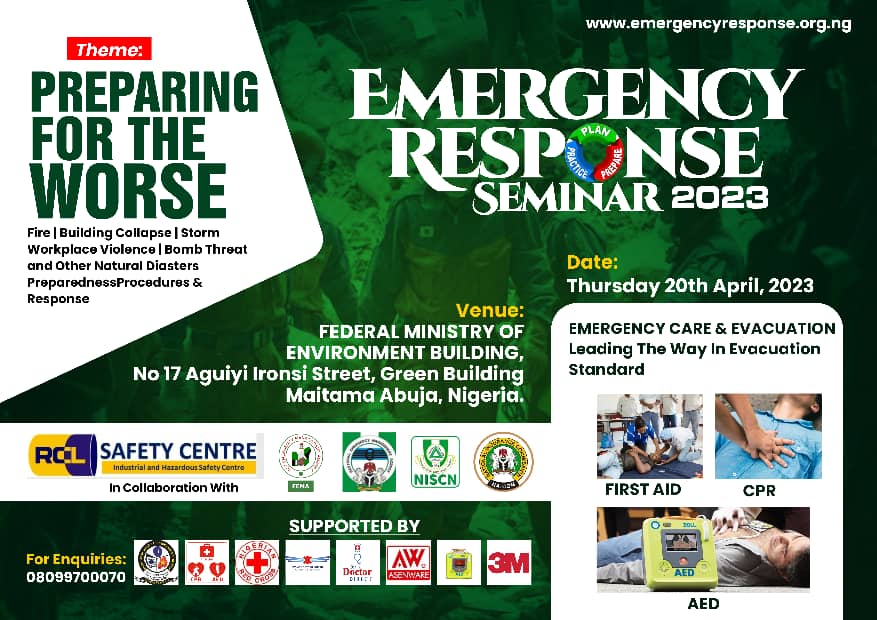
The hazards emergency responders face at a structural collapse are determined by the activities they engage in and their location at the event. The personnel involved in a structural collapse response will be highly dependent on the type of event. In general, eight categories of personnel will be involved in most responses to a large structural collapse:
• firefighters
• law enforcement officers
• EMS responders
• technical rescue personnel
• emergency managers
• skilled support personnel, including construction, trade services, utility, transit, public works, and other private-sector workers
• employees of federal, state, and local response support, public health, or other agencies
• volunteers, both organized and independent.

To describe the variation in hazards across an incident scene, the adoption of terms generally applied to different areas at a hazardous materials response operation is highly recommended. Under EPA designations, a hazardous materials scene can be divided into three areas: the exclusion zone, the contamination reduction zone, and the support zone.
The terms hot, warm, and cold can easily be adapted to the response to a collapsed building and serve to identify the severity of hazards present.
At a structural collapse, the hot zone is characterized by potential exposure to falling objects, unstable work surfaces, electricity, respirable dust particles, fires, and blood from casualties of the collapse. Because this is the area where responders are in the most danger, it is the zone in which they require the most protection.
Surrounding the hot zone, the warm zone is established to provide an area to control access to the immediate disaster site, manage direct response operations, and carry out activities such as responder and equipment decontamination. This zone is characterized by reduced physical hazards; respirable dust particles, chemical hazards, and blood from casualties of the collapse may also be present.
Outside the warm zone, the cold zone is defined for activities not directly involved in rescue activities and to manage traffic into and out of the response operation. The cold zone is established so that responders working in this area are not exposed to hazards. The outer boundary of the cold zone is the incident perimeter.
Response Activities at a Structural Collapse
Several phases and operations occur in a structural collapse. For example, the Phoenix Fire Department (PFD, 2004) identifies five distinct phases of response:
• phase 1: arrival on scene
• phase 2: pre-rescue operations
• phase 3: rescue operations
• phase 4: selected debris removal
• phase 5: debris removal and termination.
Arrival on the scene is concerned with command and coordination functions. Carrying out these functions requires establishing a chain of command, positioning equipment, and setting up a staging area from which operations can be managed. Pre-rescue operations involve assessing possible hazards at the site. At the same time, the incident command establishes a perimeter and, in coordination with the police, maintains access into and out of the site. During rescue operations, command implements an action plan to search for remaining victims. If the location of victims is unknown or if victims are potentially buried, then debris must be removed. Finally, general debris removal begins when it has been ascertained that no live victims remain at the site.
Work at a building collapse can be extremely demanding physically. The combination of hazards that particular responders face depends on their roles during the response and the zones in which those roles must be carried out.

What safety and health resources are available during a collapsed structure response?
Once the Incident Command System is established at a collapsed structure, the Incident Commander maintains accountability for all response personnel at the scene. A Safety Officer may also be mobilized and report directly to the Incident Commander. The Safety Officer is responsible for monitoring and assessing the safety aspects of the responders during the collapsed structure event. The Safety Officer’s responsibilities may include:
1. Overseeing all safety and health aspects of response personnel
2. Assuring that optimal safety and injury prevention is practiced
3. Investigating and documenting all response team injuries and illnesses
4. Preparing and maintaining entry permits
5. Ensuring that appropriate personal protective equipment (PPE) is used
6. Developing and implementing daily health and safety plans which address (i) sanitation, (ii) hygiene, (iii) PPE, (iv) Decontamination, (v) work/rest cycles, (vi) acute medical care, etc.
7. Interviewing off-going shifts to assess developing hazards
8. Assessing risk for the identified hazards; and
9. Training in hazard awareness and use of PPE.
10. Assessing structural instabilities
You can get more training from RCL Safety Centre thru https: www.safetycentre.ng/training_register
At RCL Safety Centre this training is also available in different Nigerian languages like PIDGIN,YORUBA,HAUSA AND IGBO
Our company (RCL Safety Centre) is an indigenous company dedicated to Health, Safety and Environment Training and Services.
We are technical partners of the National Industrial Safety Council of Nigeria (NISCN) as well as approved training partners of most major International Occupational Safety and Health organizations like NEBOSH, and corporate members of ISPON (Institute of Safety Professionals of Nigeria) with thousands of personnel trained in various areas till date.
For more information visit our website: www.safetycentre.ng
Email: sale@safetycentre.ng or mma@safetycentre.ng
Contact us on: 08099700070, 09057666623 or 08164363532
